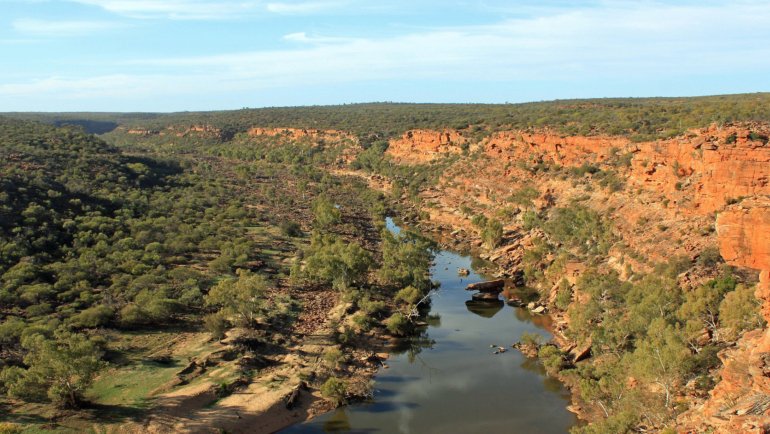Armenia, situated in the southern part of the expansive Caucasian Mountain ranges, is distinguished by its extensive geological features. It shares its borders with Georgia and Azerbaijan to the north and east, Turkey to the west, and Iran to the south.
In general, Armenia is a habitat to a diverse range of wild animals, many of which hold significant cultural and ecological value. Among the endemic wildlife found in the region are the Armenian mouflon, Armenian viper, and Caucasian lynx, among others.
This article highlights the 11 notable wild animals found in this region.
1. Golden Eagle
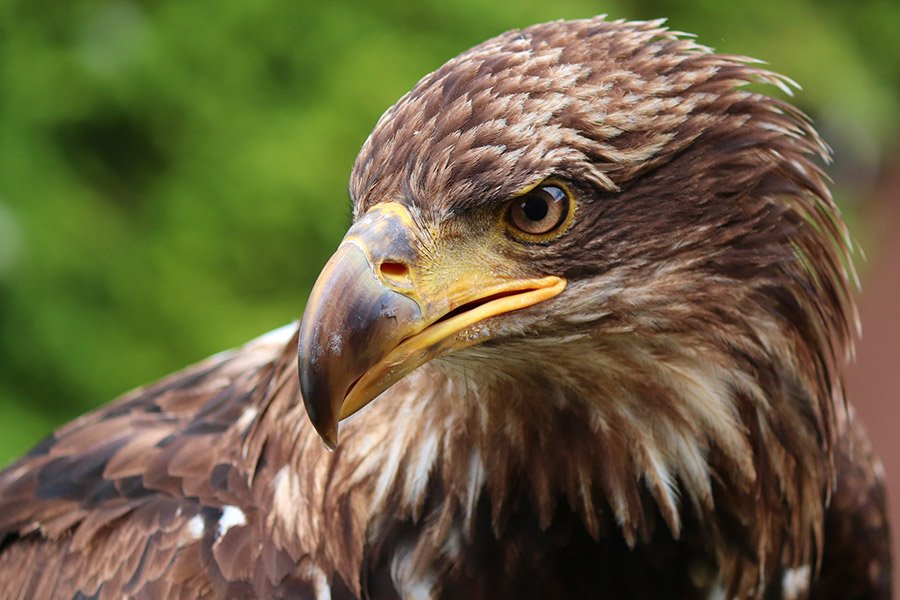
- Scientific name: Aquila chrysaetos
- Type of animal: Bird
- Where found in the country: Mountains of Armenia; it prefers rocky habitats.
- Conservation status: Least Concern
The golden eagle is the national animal of Armenia. It’s a massive bird of prey that inhabits the mountains of Armenia. Its body is adorned with dark brown feathers, while its head features a striking crown of golden feathers.
Possessing sharp and mighty talons, the golden eagle is an adept hunter, preying on small animals such as rabbits and reptiles, which it hunts in the rocky terrain of Armenia’s mountains. During late winter, the bird follows a regular mating routine.
★ Did you know? The golden eagle’s strength and agility enable them to kill prey larger than themselves.
2. Armenian Mouflon
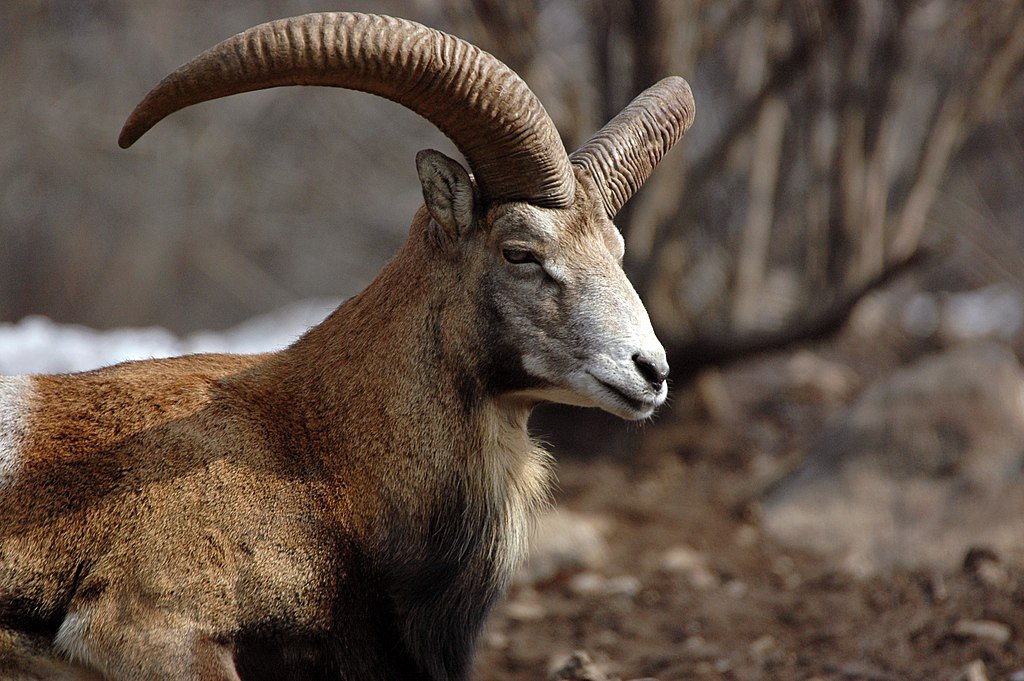
- Scientific name: Ovis orientalis gmelini
- Type of animal: Mammal
- Where found in the country: Mountainous regions of Armenia.
- Conservation status: Vulnerable
The Armenian mouflon is a sub-species of wild sheep that is indigenous to Armenia. It has reddish-brown fur, a white underbelly, dark legs, and a distinctive white patch on the rump. It’s a social animal that typically lives in groups of up to 100 individuals and primarily feeds on vegetation like grass, leaves, and shrubs.
Although the Armenian mouflon can survive for extended periods without drinking water, it still needs water to survive and will drink it when available.
★ Did you know? The Armenian mouflon plays a huge role in Armenia’s biodiversity, it`s used as a symbol of strength and endurance.
3. Armenian Bezoar Goat
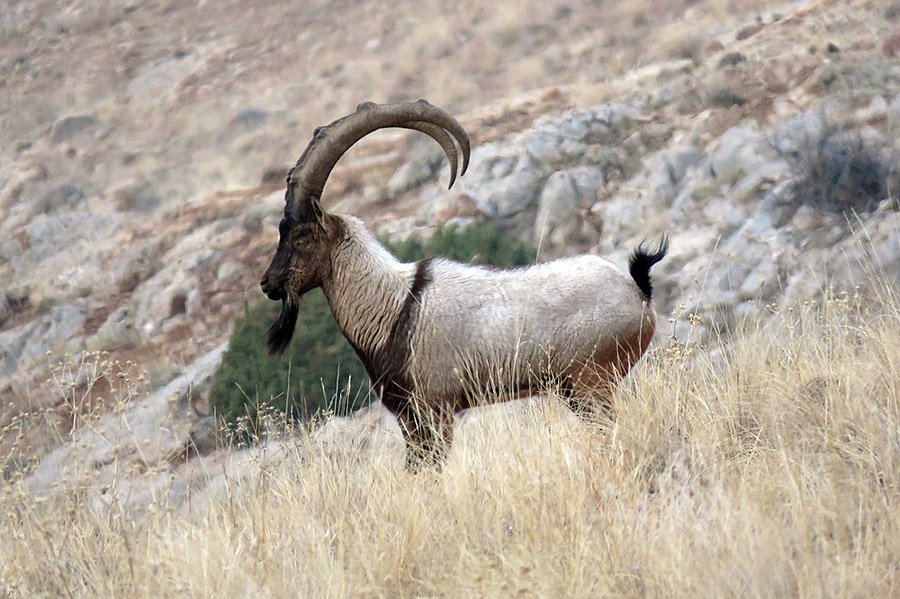
- Scientific name: Capra aegagrus aegagrus
- Type of animal: Mammal
- Where found in the country: Various mountainous regions of Armenia, including the Zangezur Range in the south, the Gegham Mountains in the central part of the country, and the Lesser Caucasus Mountains in the southeast.
- Conservation status: Least Concern
The Armenian bezoar goat is a species of wild goat that inhabits the mountainous regions of Armenia and other parts of the Caucasus region. They have a distinctive grayish-brown coat, and both males and females have curved sharp horns.
These goats can grow up to 110 kg (242 pounds) and stand up to 3 feet tall on their hind legs. They are herbivores and feed on various vegetation found in their mountainous habitats.
★ Did you know? The Armenian bezoar goat is well adapted to the mountainous terrain in which it lives, and its agility and sure-footedness make it an excellent climber. These characteristics enable the goat to navigate steep rocky areas and ledges with ease, even in harsh weather conditions.
4. Armenian Gull
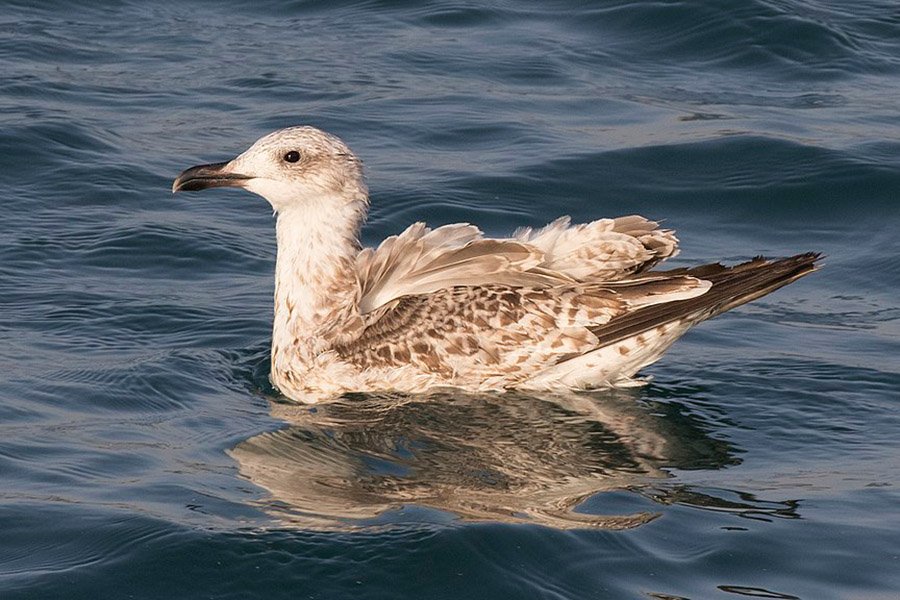
- Scientific name: Larus armenicus
- Type of animal: Bird
- Where found in the country: Freshwater lakes in Armenia.
- Conservation status: Least Concern
The Armenian gull is a medium-sized gull with a distinctive yellow beak and white head. These migratory birds are commonly found near coastlines, rivers, wetlands, and lakes. They feed on a variety of prey, including small mammals, reptiles, and fish.
Armenian gulls are social birds and often move in large groups. They are monogamous and both males and females participate in caring for their young.
★ Did you know? In Armenian mythology, the Armenian gull is linked with the god Vahagn, who was believed to be a powerful deity associated with fire, thunder, and war. According to legend, Vahagn possessed the power to transform himself into a gull, and the bird became associated with the god as a symbol of his power and abilities.
5. Caucasus Lynx

- Scientific name: Lynx lynx dinniki
- Type of animal: Mammal
- Where found in the country: Caucasus Mountains
- Conservation status: Least Concern
The Caucasus Lynx is a solitary wild cat that has a grayish coat with dark spots. It’s native to the Caucasus, Turkey, Iran, and European Russia and is a subspecies of the Eurasian Lynx. These lynxes typically inhabit rocky areas, mountainous terrain, and dense forests. As carnivores, they feed primarily on birds, small to medium-sized mammals, and reptiles.
★ Did you know? The Caucasus Lynx is known for its keen senses of vision and hearing. They are able to rotate their ears to locate prey and can easily adapt to low-light environments when hunting.
6. Armenian Viper
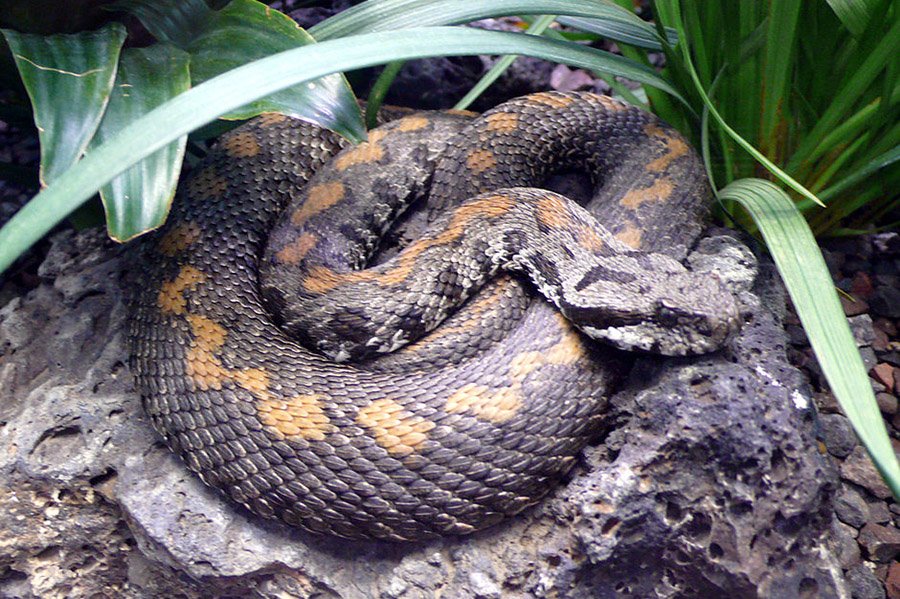
- Scientific name: Montivipera raddie
- Type of animal: Reptiles
- Where found in the country: Throughout Armenia, including in mountainous regions.
- Conservation status: Near Threatened
The Armenian viper, also known as the Armenian mountain viper, is a venomous snake that prefers mountainous habitats. It has a distinctive flat head and short snout, and its coloration can vary from reddish-brown to gray with darker markings along its back, while its belly is lighter in color.
★ Did you know? Armenian vipers have venom that can be dangerous to human health if left untreated, similar to other vipers. However, these snakes typically do not attack humans and will only become defensive when they feel threatened
7. Brown Bear
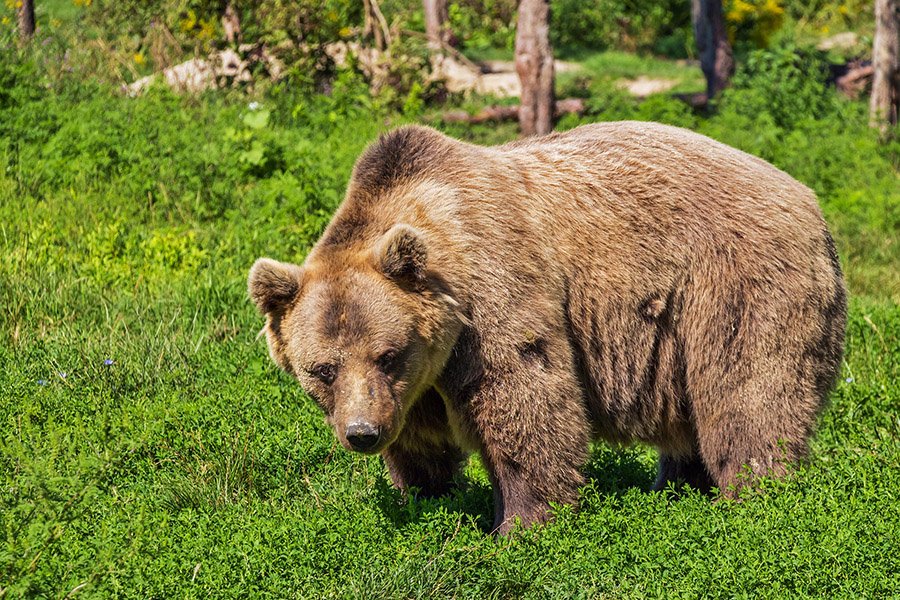
- Scientific name: Ursus arctos
- Type of animal: Mammal
- Where found in the country: Zagros and Caucasus Mountains regions.
- Conservation status: Least Concern
The brown bear is a large mammal that inhabits various parts of the world, including Armenia. It’s covered with shaggy brown fur and possesses wide claws ideal for climbing and digging. Its diet varies depending on the season and food availability across Armenia. Unfortunately, the brown bear is elusive due to hunting and habitat loss.
★ Did you know? The brown bear has a very acute sense of smell, allowing them to detect prey or food sources easily.
8. Common Buzzard
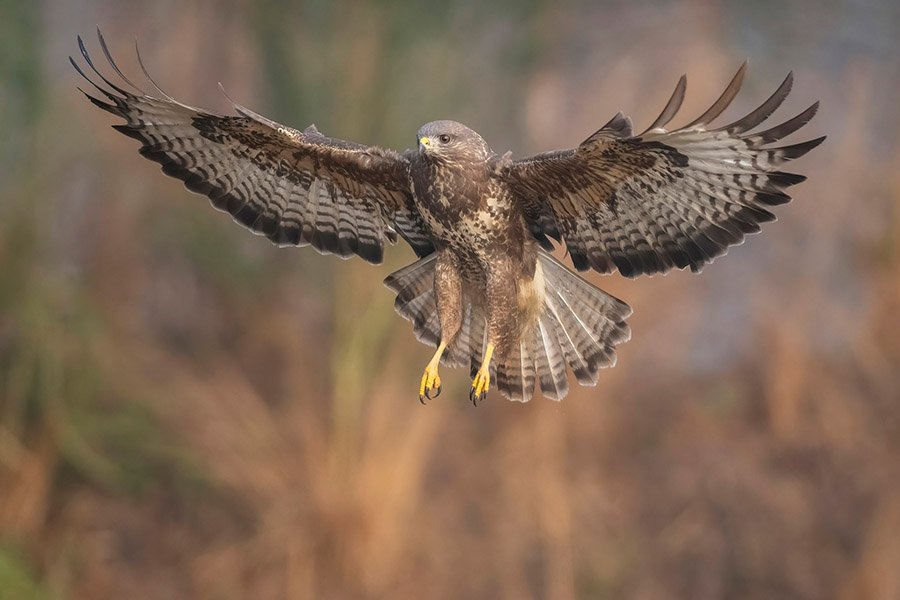
- Scientific name: Buteo buteo
- Type of animal: Bird
- Where found in the country: Forest edges
- Conservation status: Least Concern
The common Buzzard is a type of medium-sized bird that belongs to the group of birds that hunt and eat other animals. They have dark brown feathers on their upper body and white feathers on their tail.
Buzzards are flexible eaters, meaning they eat whatever prey is available to them, including reptiles, birds, small animals, and insects. To catch their prey, Buzzards use a hunting technique where they fly high into the sky and then dive down toward the ground to catch their prey with their sharp claws.
★ Did you know? Common buzzards have a highly developed sense of hearing, which enables them to detect even the slightest sounds while in flight. It is said that they can even hear the movement of a mouse on the ground from high up in the air.
9. Red Fox
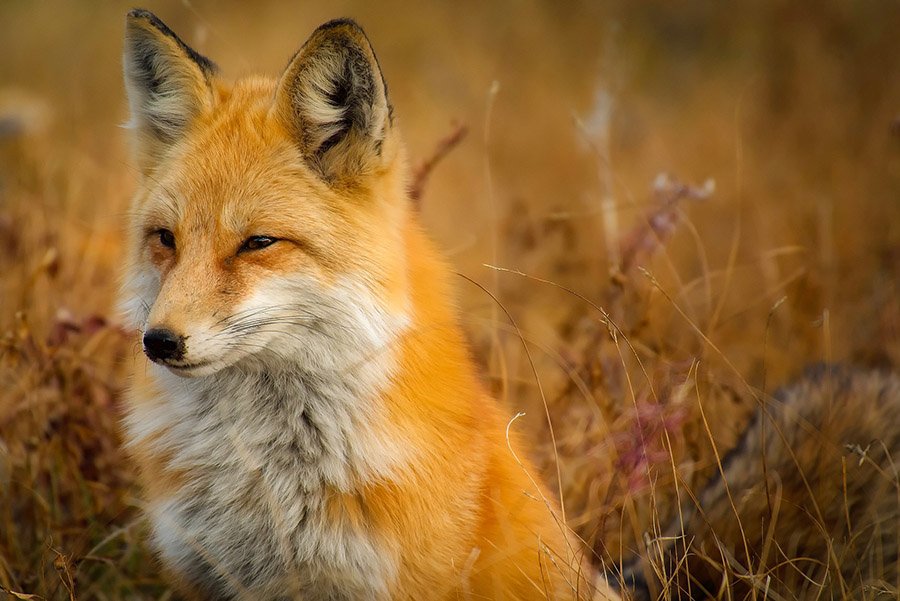
- Scientific name: Vulpes vulpes
- Type of animal: Mammal
- Where found in the country: Throughout Armenia, from Armenian Highlands to the lower-lying areas of the country.
- Conservation status: Least Concern
The red fox is a highly versatile animal that can thrive in various environments around the world. They are easily recognizable due to their reddish-brown fur, white underbelly, and bushy tails with a whitish tip.
Red foxes are omnivorous, meaning they eat a diverse range of prey and may also scavenge or raid garbage in urban areas.
During the January to February breeding season, female red foxes give birth to up to eight kits in hidden dens. At birth, the kits are blind and vulnerable, so they stay in the dens with their mothers for several weeks until they are strong enough to venture out.
★ Did you know? Compared to other fox species, the red fox has a remarkable ability to adapt quickly to new environments.
10. Grey Wolf
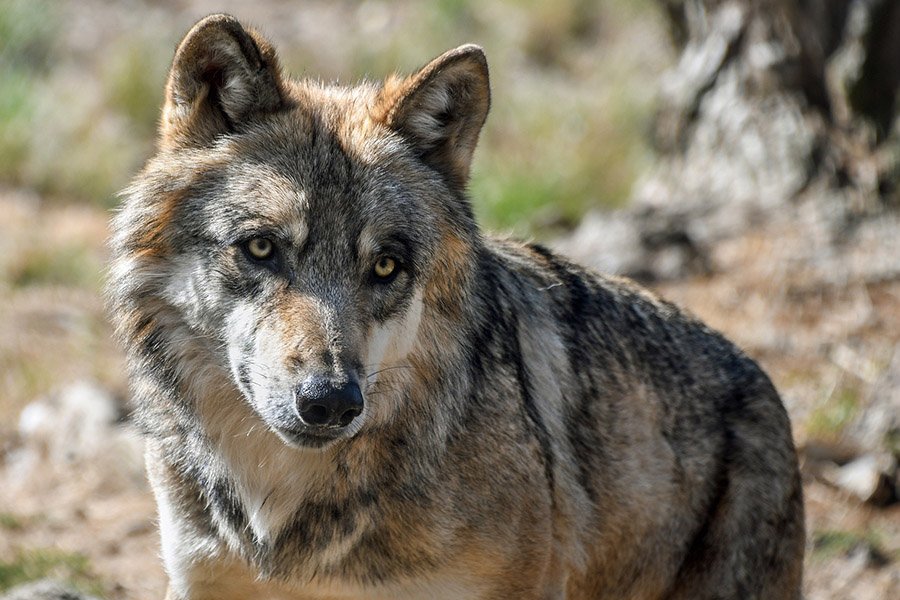
- Scientific name: Canis lupus
- Type of animal: Mammal
- Where found in the country: Mountainous regions in Armenia.
- Conservation status: Least Concern
The grey wolf is a highly intelligent and imposing predator that is native to both Eurasia and North America. In Armenia, these wolves can be found in various habitats, including forests, grasslands, and mountains.
Their primary food source is usually hoofed mammals like bezoar goats, moose, and deer, but they will also hunt small prey like lizards, bunnies, and fish. Grey wolves are social animals that live and hunt in packs, typically consisting of 7 to 8 individuals.
★ Did you know? Grey wolves use a range of body language to communicate with one another, including barking, growling, howling, and scent-making. These forms of communication help them coordinate their activities, establish social hierarchies within the pack, and identify other group members.
11. Caucasian Leopard

- Scientific name: Panthera pardus tulliana
- Type of animal: Mammal
- Where found in the country: Armenian highlands.
- Conservation status: Vulnerable
The Caucasian leopard, a leopard subspecies native to the Caucasus region, is a formidable predator found in various habitats, including rocky and forested areas. Their diet consists of various animals, including deer, domestic animals, and small mammals.
Unfortunately, the survival of the Caucasian leopard is threatened by habitat loss and fragmentation, poaching, and human-wildlife conflict. However, measures are currently being taken to protect the remaining populations of this species, and conservation efforts are underway to help ensure their survival for future generations.
★ Did you know? In ancient times, the Caucasian leopard was considered a symbol of wisdom and power, and was often depicted in art and literature as a powerful and revered animal. Its presence in the region was seen as a sign of the natural beauty and richness of the land, and its strength and agility were admired by many.
